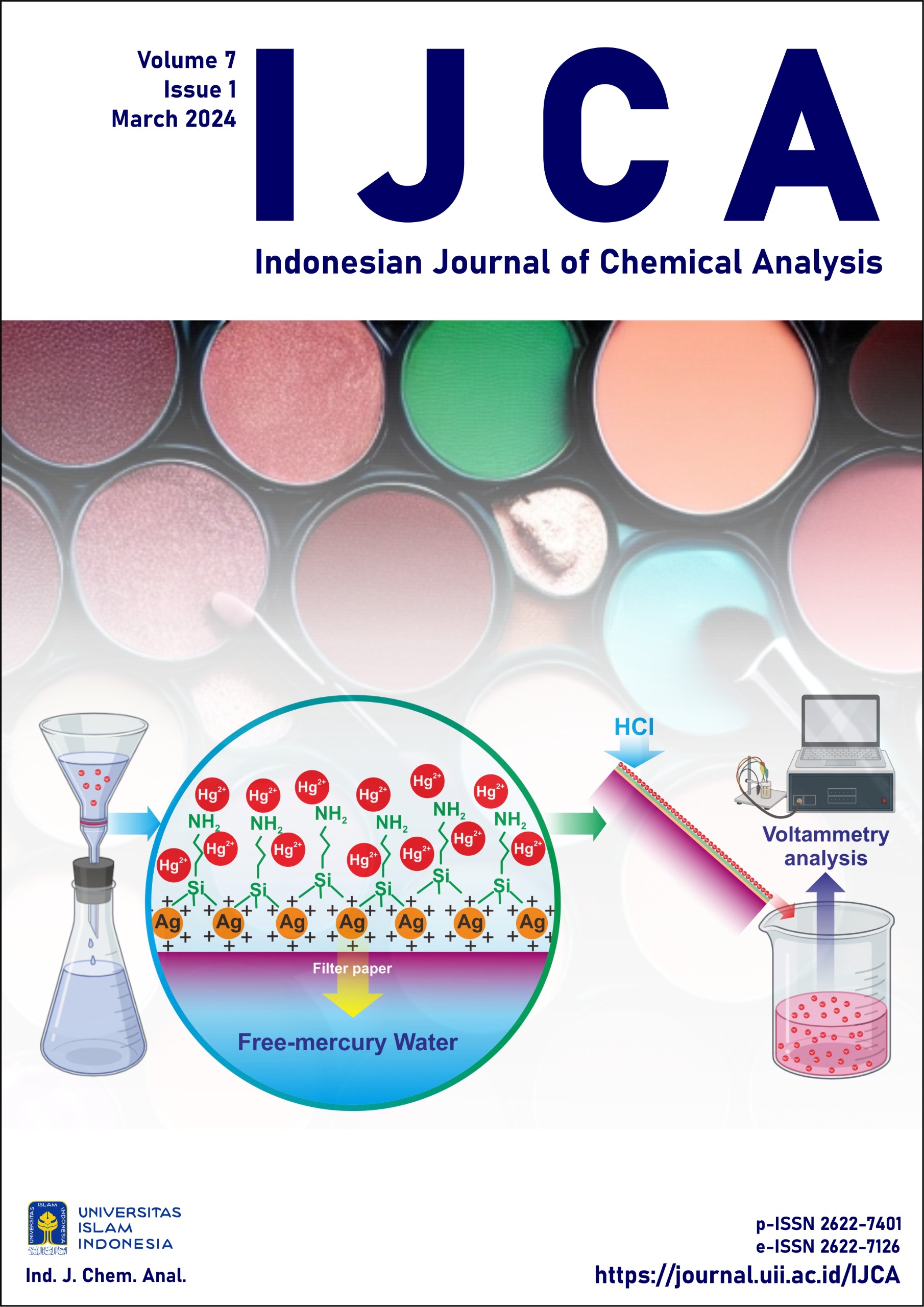Main Article Content
Abstract
Heavy metals Cd2+ is a dangerous pollutant of water and ecological systems if it is above the quality standard threshold. Cassava peel has a fairly high carbon element content, namely 59,31%, so it can be used as an activated carbon to break down Cd2+ metals ions in water. This research aims to determine kinetic modeling and adsorption isotherms of Cd2+ ions using CPAC activated by H3PO4, determine the optimum pH and temperature conditions for Cd2+ ion adsorption and determine the adsorption capacity of Cd2+ ions using CPAC activated by H3PO4. CPAC is made through a carbonization process at a temperature of 500 °C for 1 hour. Next, it was impregnated with H3PO4 at a concentration of 30 % with a ratio of 1:5 (w/w) for 24 hours and physically activated at a temperature of 600 °C for 1 hour. Based on research, kinetic modeling and adsorption isotherms of Cd2+ ions using CPAC activated by H3PO4 following Pseudo-Second-Order (PSO) kinetic modeling and Freundlich isotherm, the optimum pH and temperature conditions for Cd2+ ion adsorption were obtained at pH 5 and temperature 25 °C. Thermodynamic parameters such as Gibbs energy (∆G°), enthalpy (∆H°), and entropy (∆S°), have been evaluated and indicate physical, spontaneou, and exothermic adsorption processes. The adsorption capacity of Cd2+ ions using CPAC activated by H3PO4 is 5.2219 mg/g.
Keywords
Article Details
Copyright (c) 2024 Tri Ariyanto Nugroho, Cucun Alep Riyanto, November Rianto Aminu

This work is licensed under a Creative Commons Attribution-ShareAlike 4.0 International License.
You are free to:
Share — copy and redistribute the material in any medium or format
Adapt — remix, transform, and build upon the material for any purpose, even commercially
Under the following terms:
Attribution — You must give appropriate credit, provide a link to the license, and indicate if changes were made. You may do so in any reasonable manner, but not in any way that suggests the licensor endorses you or your use.
ShareAlike — If you remix, transform, or build upon the material, you must distribute your contributions under the same license as the original
No additional restrictions — You may not apply legal terms or technological measures that legally restrict others from doing anything the license permits




